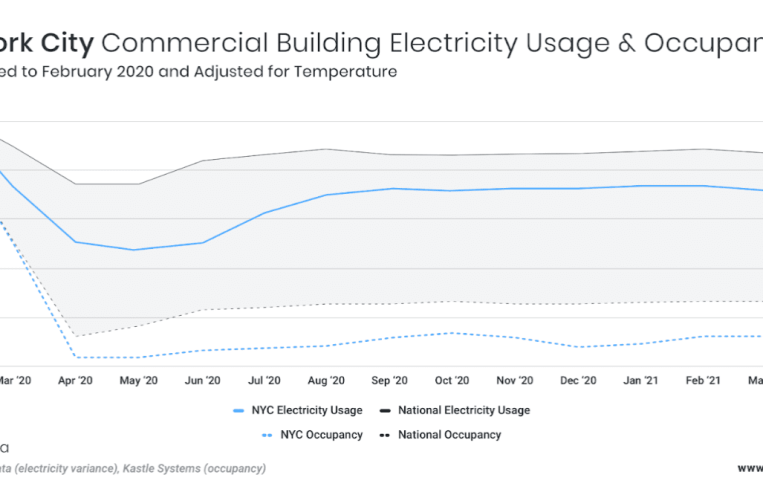Office Buildings’ Carbon Emissions Spike Due to COVID-Related Ventilation
By Rebecca Baird-Remba August 13, 2021 5:26 pm
reprints
Commercial landlords have been using significantly more electricity—and producing tens of millions in additional carbon emissions—in order to ventilate office buildings properly during the coronavirus pandemic, according to a new report from Hatch Data, which develops building management software and sensors.
Hatch predicts that when offices return to pre-COVID occupancy levels, commercial buildings will use 44 billion kilowatt hours of additional energy, which is roughly equivalent to nearly 31 million more metric tons of carbon. The firm noted that the carbon footprint was comparable to 5.6 million homes’ electricity use for a year, or eight coal fired power plants at 100 percent capacity for a year.
Energy usage usage initially declined in office buildings across the U.S., as occupancy dropped to historic lows. Just before the pandemic began, in February 2020, office buildings were at 94 percent occupancy and using about $30 billion worth of electricity annually. Then, in April 2020, office buildings were only 15 percent occupied, but building owners were still using 76 percent of the electricity they did in February.
By July 2021, offices were only 34 percent occupied, but office building energy usage was already up to an annual cost of $29 billion, or 91 percent of its pre-pandemic baseline. So once office building owners realized tenants were coming back, the increased ventilation required to meet COVID standards has caused energy usage to rise significantly.
All of this comes from building owners following guidelines released in the spring of 2020 by the American Society of Heating, Refrigerating and Air-Conditioning Engineers (ASHRAE). In response to COVID, the trade organization called for landlords to upgrade their central air filtration systems to MERV-13 filters, keep their ventilation running 24 hours a day, and consider portable room air cleaners with HEPA filters or ultraviolet irradiation in heating and cooling systems. While ASHRAE has since revised its guidelines to reduce HVAC use, many building owners have not necessarily adjusted their operations accordingly.
At the same time, many New York City building owners are staring down the barrel of Local Law 97 deadlines, which require buildings to meet specific emission caps beginning in 2024. Owners can circumvent the caps by buying renewable energy credits generated inside the city, though that is basically a non-starter because there aren’t large wind farms, solar farms or hydroelectric within the five boroughs. The Real Estate Board of New York pushed Gov. Andrew Cuomo to include an option that would allow them to buy credits generated outside the city in this year’s state budget, but that proposal died at the negotiating table.
However, large office building owners aren’t completely at a loss. Hatch Data COO Ben Mendelson said that landlords should make sure that all their building systems are running as efficiently as possible.
“The first step is ensuring that the buildings are running optimally, and replacing those systems with more energy efficient systems,” said Mendelson. “The cheapest kilowatt hour is the one that’s not used. The first step toward meeting those goals should be to optimize the building as it is today.”
Rebecca Baird-Remba can be reached at rbairdremba@commercialobserver.com.


